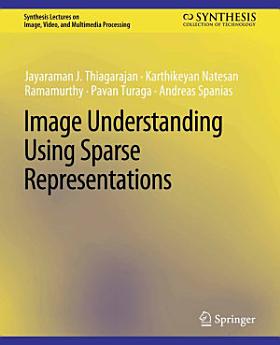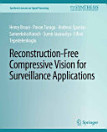Image Understanding using Sparse Representations
2022年6月 · Springer Nature
电子书
106
页
report评分和评价未经验证 了解详情
关于此电子书
Image understanding has been playing an increasingly crucial role in several inverse problems and computer vision. Sparse models form an important component in image understanding, since they emulate the activity of neural receptors in the primary visual cortex of the human brain. Sparse methods have been utilized in several learning problems because of their ability to provide parsimonious, interpretable, and efficient models. Exploiting the sparsity of natural signals has led to advances in several application areas including image compression, denoising, inpainting, compressed sensing, blind source separation, super-resolution, and classification. The primary goal of this book is to present the theory and algorithmic considerations in using sparse models for image understanding and computer vision applications. To this end, algorithms for obtaining sparse representations and their performance guarantees are discussed in the initial chapters. Furthermore, approaches for designing overcomplete, data-adapted dictionaries to model natural images are described. The development of theory behind dictionary learning involves exploring its connection to unsupervised clustering and analyzing its generalization characteristics using principles from statistical learning theory. An exciting application area that has benefited extensively from the theory of sparse representations is compressed sensing of image and video data. Theory and algorithms pertinent to measurement design, recovery, and model-based compressed sensing are presented. The paradigm of sparse models, when suitably integrated with powerful machine learning frameworks, can lead to advances in computer vision applications such as object recognition, clustering, segmentation, and activity recognition. Frameworks that enhance the performance of sparse models in such applications by imposing constraints based on the prior discriminatory information and the underlying geometrical structure, and kernelizing the sparse coding and dictionary learning methods are presented. In addition to presenting theoretical fundamentals in sparse learning, this book provides a platform for interested readers to explore the vastly growing application domains of sparse representations.
作者简介
Jayaraman J. Thiagarajan received his M.S. and Ph.D. degrees in Electrical Engineering from Arizona State University. He is currently a postdoctoral researcher in the Center for Applied Scientific Computing at Lawrence Livermore National Laboratory. His research interests are in the areas of machine learning, computer vision, and data analysis and visualization. He has served as a reviewer for several IEEE, Elsevier, and Springer journals and conferences.Karthikeyan Natesan Ramamurthy is a research staff member in the Business Solutions and Mathematical Sciences department at the IBM Thomas J. Watson Research Center in Yorktown Heights, NY. He received his M.S. and Ph.D. degrees in Electrical Engineering from Arizona State University. His research interests are in the areas of low-dimensional signal models, machine learning, data analytics, and computer vision. He has been a reviewer for a number of IEEE and Elsevier journals and conferences.Pavan Turaga is an Assistant Professor with the School of Arts, Media, and Engineering and the School of Electrical, Computer, and Energy Engineering at Arizona State University, since 2011. Prior to that, he was a Research Associate at the Center for Automation Research, University of Maryland, College Park, MD, from 2009-11. He received M.S. and Ph.D. degrees in Electrical Engineering from the University of Maryland, College Park, MD, in 2008 and 2009 respectively, and the B.Tech. degree in Electronics and Communication Engineering from the Indian Institute of Technology, Guwahati, India, in 2004. His research interests are in computer vision, applied statistics, and machine learning with applications to human activity analysis, video summarization, and dynamic scene analysis. He was awarded the Distinguished Dissertation Fellowship in 2009. He was selected to participate in the Emerging Leaders in Multimedia Workshop by IBM, New York, in 2008.Andreas Spanias is Professor in the School of Electrical, Computer, and Energy Engineering at Arizona State University (ASU). He is also the founder and director of the SenSIP industry consortium. His research interests are in the areas of adaptive signal processing, speech processing, and audio sensing. He and his student team developed the computer simulation software Java-DSP. He is author of two text books: Audio Processing and Coding by Wiley and DSP: An Interactive Approach. He served as Associate Editor of the IEEE Transactions on Signal Processing and as General Co-chair of IEEE ICASSP-99. He also served as the IEEE Signal Processing Vice-President for Conferences. Andreas Spanias is co-recipient of the 2002 IEEE Donald G. Fink paper prize award and was elected Fellow of the IEEE in 2003. He served as Distinguished lecturer for the IEEE Signal processing society in 2004.
为此电子书评分
欢迎向我们提供反馈意见。
如何阅读
智能手机和平板电脑
笔记本电脑和台式机
您可以使用计算机的网络浏览器聆听您在 Google Play 购买的有声读物。
电子阅读器和其他设备
如果要在 Kobo 电子阅读器等电子墨水屏设备上阅读,您需要下载一个文件,并将其传输到相应设备上。若要将文件传输到受支持的电子阅读器上,请按帮助中心内的详细说明操作。




